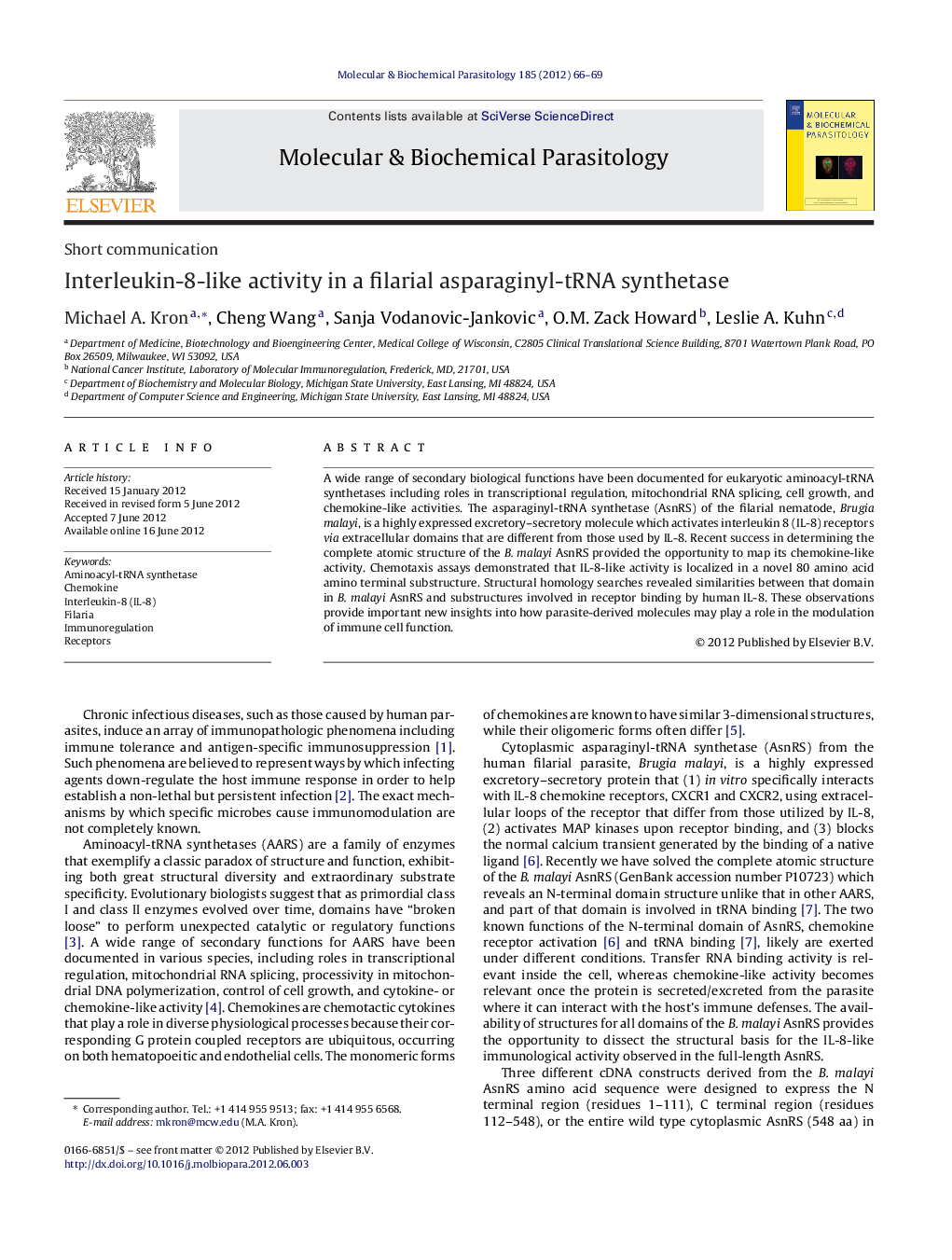| Article ID | Journal | Published Year | Pages | File Type |
|---|---|---|---|---|
| 2829880 | Molecular and Biochemical Parasitology | 2012 | 4 Pages |
A wide range of secondary biological functions have been documented for eukaryotic aminoacyl-tRNA synthetases including roles in transcriptional regulation, mitochondrial RNA splicing, cell growth, and chemokine-like activities. The asparaginyl-tRNA synthetase (AsnRS) of the filarial nematode, Brugia malayi, is a highly expressed excretory–secretory molecule which activates interleukin 8 (IL-8) receptors via extracellular domains that are different from those used by IL-8. Recent success in determining the complete atomic structure of the B. malayi AsnRS provided the opportunity to map its chemokine-like activity. Chemotaxis assays demonstrated that IL-8-like activity is localized in a novel 80 amino acid amino terminal substructure. Structural homology searches revealed similarities between that domain in B. malayi AsnRS and substructures involved in receptor binding by human IL-8. These observations provide important new insights into how parasite-derived molecules may play a role in the modulation of immune cell function.
Graphical abstractFigure optionsDownload full-size imageDownload high-quality image (57 K)Download as PowerPoint slideHighlightsBrugia malayi AsnRS has IL-8 like activity. ► IL-8-like activity resides in the tRNA binding domain of the filarial AsnRS. ► Structural homology exists with regions key to receptor binding by human IL-8.
